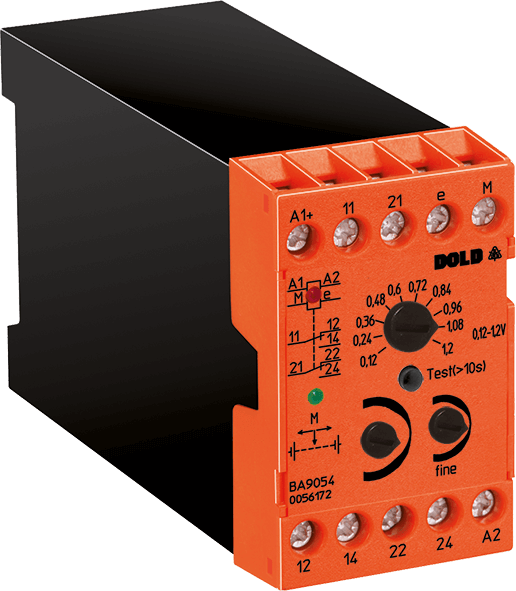Battery Monitors
Introduction to Battery Monitors
Definition and Core Functionality
Battery monitors are specialized electronic instruments that continuously measure and evaluate the health, charge status, voltage, current, and overall performance of battery systems. These monitoring tools are critical for maintaining battery efficiency, prolonging service life, and avoiding sudden power losses. Whether used in standalone battery setups or integrated into complex energy storage networks, battery monitors ensure real-time visibility into system performance. Many models include built-in indicators for operation and fault status, allowing users to identify issues at a glance and take preventive action before failures occur.
Importance of Battery Monitors
In any system where battery power plays a critical role—such as uninterruptible power supplies (UPS), solar photovoltaic systems, emergency backup generators, electric vehicles, and industrial control systems—battery monitors provide a vital layer of operational insight. By offering continuous feedback on charge and discharge conditions, they enable timely maintenance and fault isolation, helping to minimize downtime and optimize battery usage. In battery banks composed of multiple cells, battery symmetry monitors ensure each unit maintains equal charge and discharge cycles, which is essential for preventing performance degradation and premature failure.
Key Electrical Concepts
Voltage
Voltage measures the electrical potential difference between two points and is an essential metric in battery monitoring. Accurate voltage readings allow operators to gauge the current charge level, detect under voltage or overvoltage conditions, and ensure consistent power delivery across the system. Most monitors display real-time voltage values and include thresholds for triggering alarms or system responses.
Amperage
Amperage, or current, indicates the flow of electric charge through the battery. Monitoring amperage provides insight into load behavior, charging efficiency, and power consumption trends. It is also used to detect excessive discharge or unexpected load events that could stress the battery.
Wattage
Wattage represents the total power output or consumption and is calculated by multiplying voltage by amperage. Monitoring wattage helps optimize system efficiency by ensuring the power drawn from the battery is within acceptable limits for the intended load.
Types of Battery Monitors
Basic Battery Monitors
Basic battery monitors provide simple voltage-only readings. These units are suitable for cost-sensitive applications where basic visibility into battery charge status is sufficient, such as small generators, backup systems, or consumer-grade battery packs.
Smart Battery Monitors
Smart battery monitors use advanced sensors and shunt resistors to measure both current and voltage with high precision. These units feature digital interfaces, high-resolution displays, and multiple configuration options. Many models support Bluetooth or Wi-Fi connectivity for app-based control, while others include CAN bus or Modbus interfaces for industrial integration. Smart monitors are ideal for applications like solar energy storage, marine power systems, electric vehicle management, and off-grid installations. Additional capabilities often include auxiliary voltage monitoring, programmable alarms, and operate delay functionality for enhanced system control.
Features of Modern Battery Monitors
State of Charge Percentage (SOC): SOC is displayed as a percentage, giving users a real-time estimate of remaining battery capacity. This feature is essential for managing usage patterns and planning recharges.
Direct Communication Capabilities: Industrial-grade monitors support protocols, enabling seamless communication with PLCs. Interface modules simplify installation and configuration.
Low Voltage Protection: Built-in alarms are triggered when voltage drops below a specified threshold. These features help prevent deep discharge events that can damage battery cells or connected equipment.
Output Contacts and Relay Integration: Some models feature relay output terminals that activate alarms, shut down systems, or notify operators when critical parameters are exceeded. These outputs support enhanced safety, automation, and fail-safe responses.
Applications of Battery Monitors
Vehicle Applications: Battery monitors are essential in electric cars, scooters, and recreational vehicles (RVs), providing real-time visibility into battery charge, temperature, and load behavior.
Off-Grid and Solar Power Systems: In renewable energy setups, battery monitors manage solar charge controllers and inverter systems, helping users maximize battery life and maintain reliable off-grid performance.
Marine Uses: For vessels like yachts and fishing boats, battery monitors ensure reliable operation of navigation, lighting, and auxiliary systems. They help prevent power loss during extended journeys and remote anchorage.
Industrial Equipment Monitoring: Within data centers, factory automation, and critical control systems, battery monitors help maintain UPS integrity and manage battery redundancy. Monitoring charge/discharge cycles ensures that backup systems remain ready at all times.
Popular Battery Monitor Brands and Models
Dold Battery Solutions
Dold offers a robust lineup of battery monitoring solutions tailored for industrial and energy-critical environments. Known for their durability, accuracy, and compatibility with modern communication protocols, Dold monitors support auxiliary voltage inputs, output relays, and advanced timing features. They are widely used in battery symmetry monitoring, control panels, and smart energy infrastructure where reliability and integration flexibility are essential.

Benefits of Using Battery Monitors
Extended Battery Life: Monitoring helps prevent deep discharge and inefficient charging, significantly improving the cycle life and total usable lifespan of battery systems.
Improved Performance and Reliability: Continuous monitoring provides immediate insight into potential issues, helping operators resolve them before they lead to failures. This is especially valuable in mission-critical environments like hospitals, data centers, and industrial control systems.
Prevention of Charge Abnormalities: Battery monitors can detect unusual voltage, current, or temperature behavior that may indicate cell degradation, thermal runaway, or wiring issues. Early detection reduces risk and supports safe, stable operation.
Quick Visual Feedback: LED indicators and digital displays show current status, charge level, and alarm conditions at a glance, helping technicians respond quickly to system changes.
Complementary Safety Components and Solutions
To fully harness the capabilities of Safety PLCs, it is essential to integrate them with a comprehensive range of industrial safety and monitoring devices. These include traditional safeguards like the emergency stop button, two hand station, and emergency stop rope pull. Systems also benefit from intelligent switching technologies like safety contactors, safety relays, safety non-contact switches, RFID switches, and mechanical interlock switches.
For more complex safety architectures, components like solenoid locking switches and HMI touch panels provide interactive control and diagnostic capabilities. Power management and monitoring are also vital, with power supplies, battery monitors, current monitors, voltage monitoring relays, under voltage relays, undercurrent monitoring relays, and insulation monitors ensuring stable and safe operation across varying load conditions.
Motor and motion-related applications often require additional safety layers, supported by soft starters, reversing contactors, motor brake relays, standstill monitors, speed monitors, and phase sequence relays. These components work together with the Safety PLC to provide synchronized shutdowns, overload protection, and fail-safe conditions. For enhanced system performance and compliance analysis, measurement solutions offer real-time insight into operational data, helping facilities maintain optimal safety and efficiency.
Conclusion
Battery monitors are an indispensable part of any battery-powered or energy storage system, providing the necessary visibility to optimize performance, extend lifespan, and enhance operational safety. From basic monitoring of voltage levels to advanced diagnostics integrated into smart infrastructure, these devices offer measurable value across a wide range of industries. When paired with features like relay output, battery symmetry checks, communication interfaces, and app-based control, battery monitors form the backbone of intelligent power management systems—keeping facilities powered, efficient, and protected.
